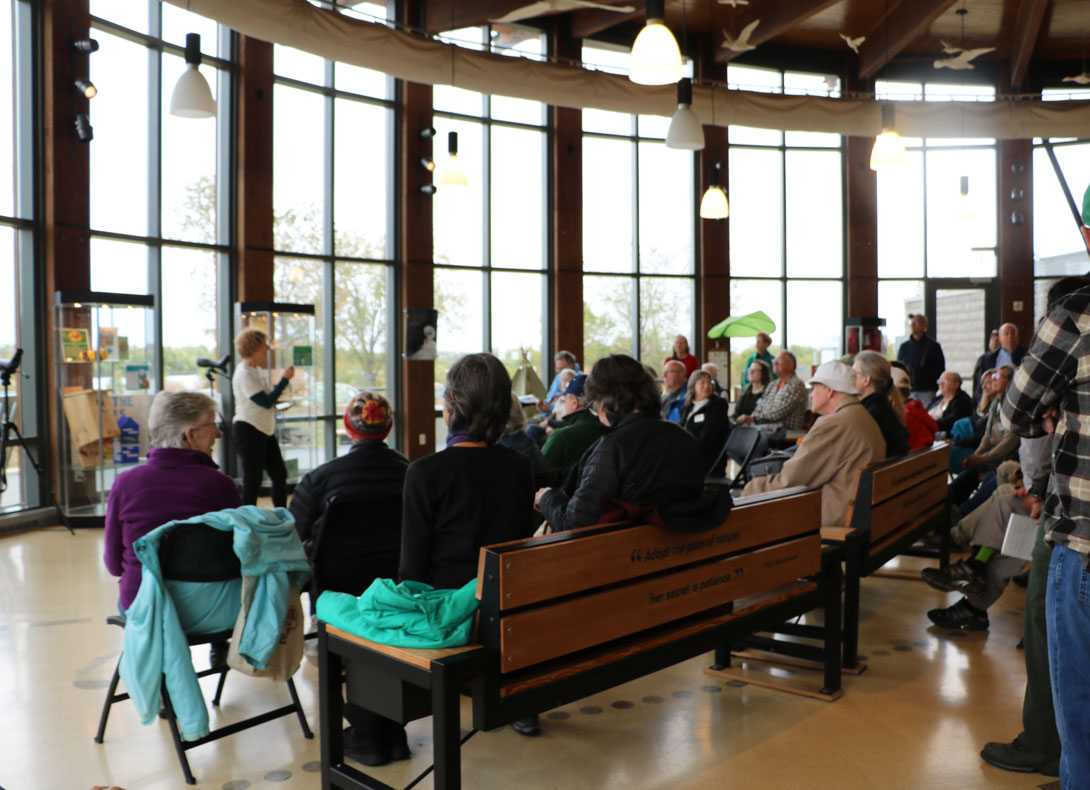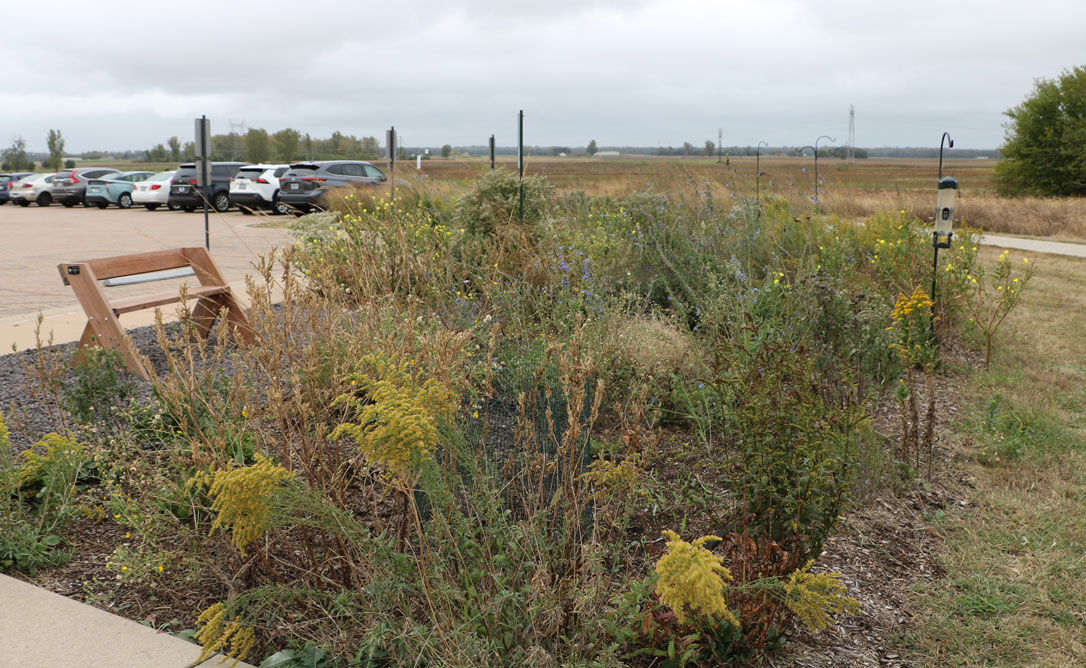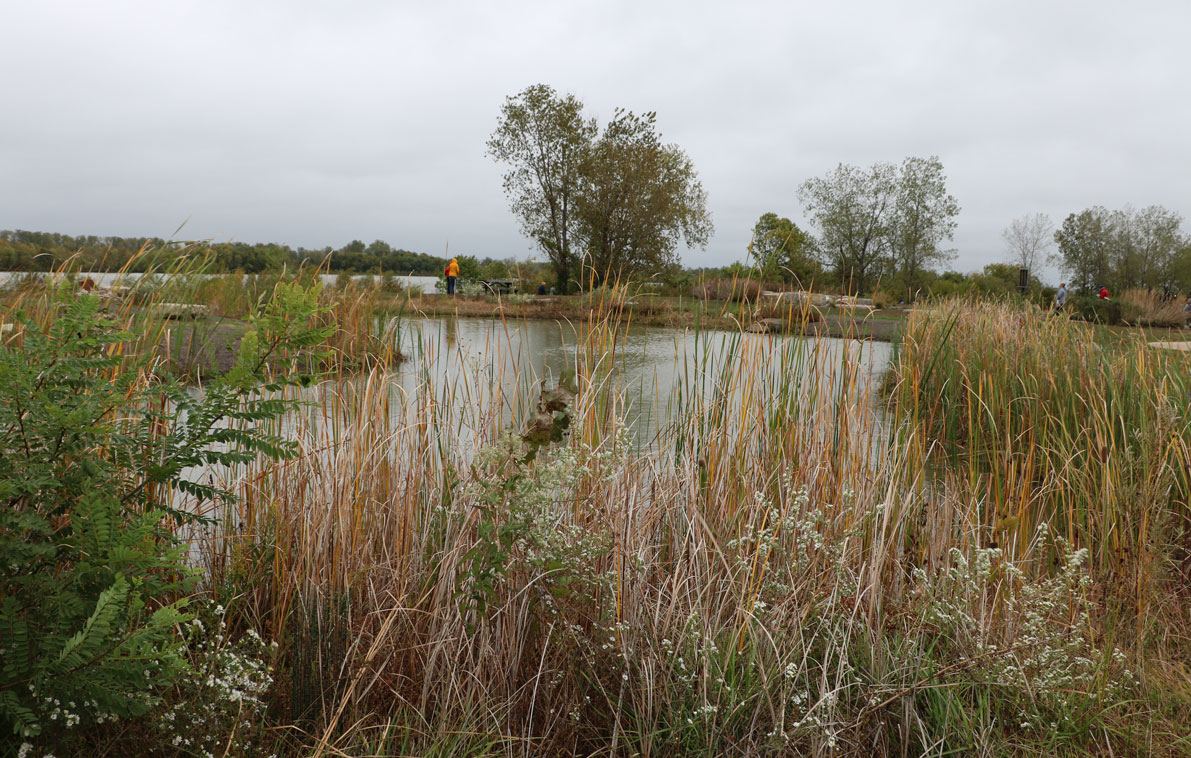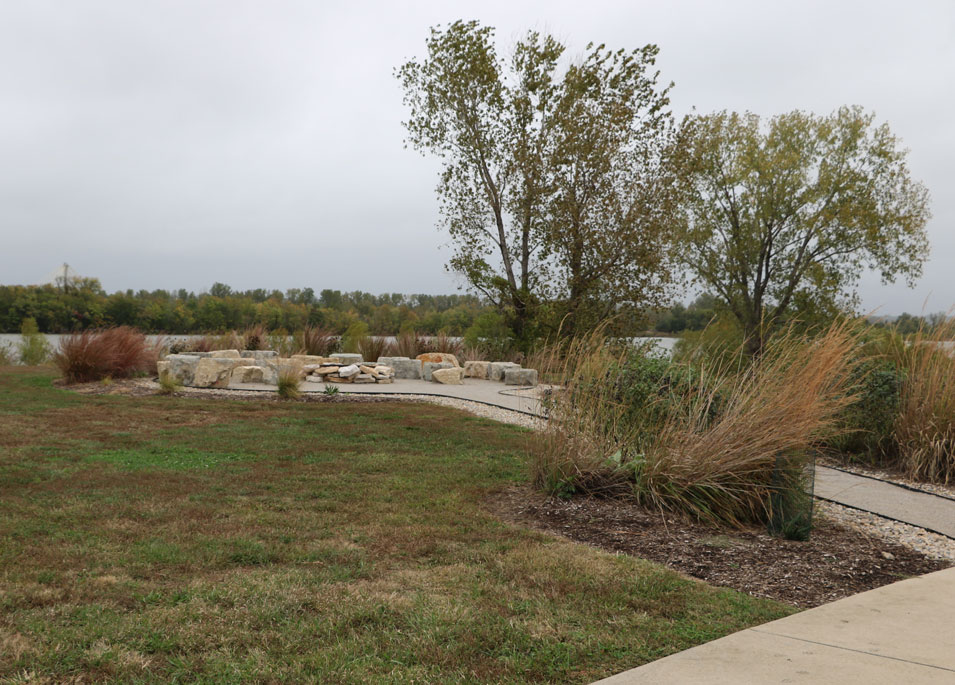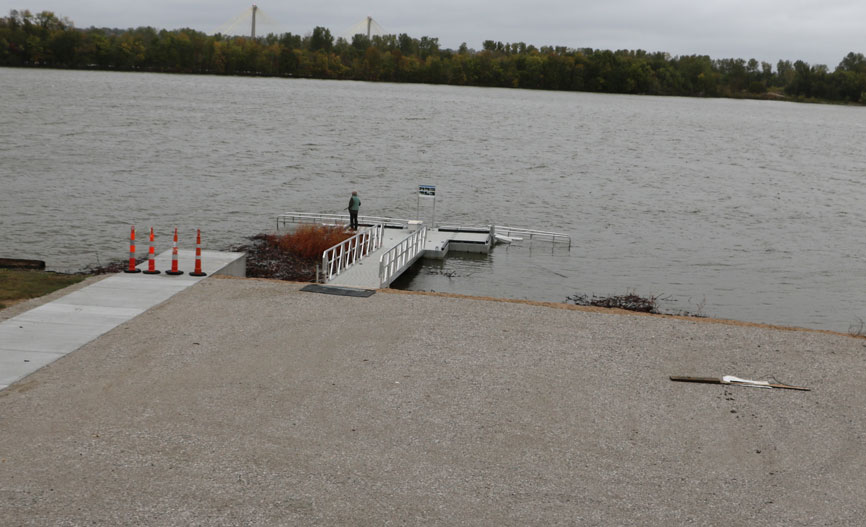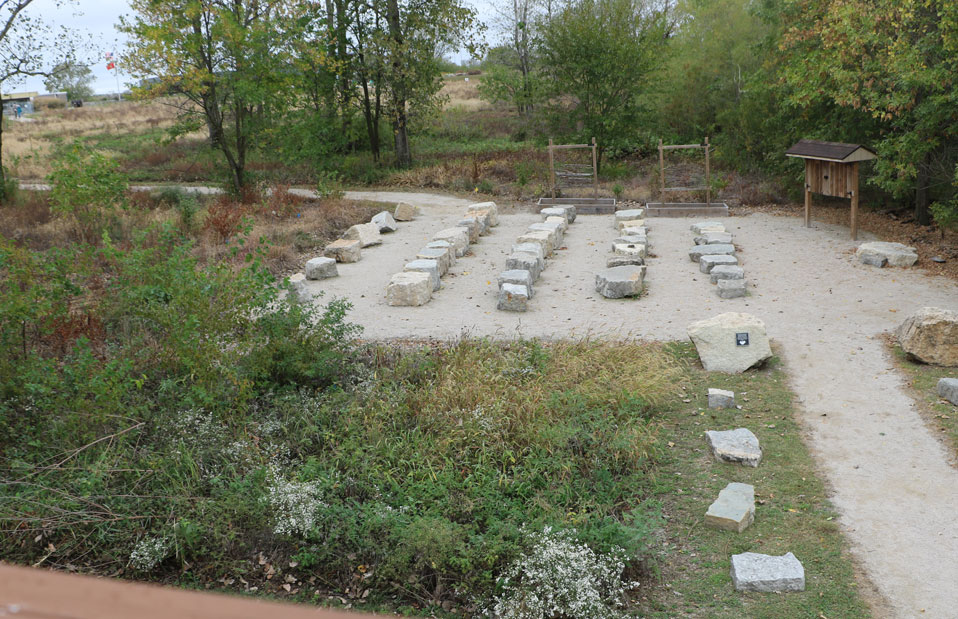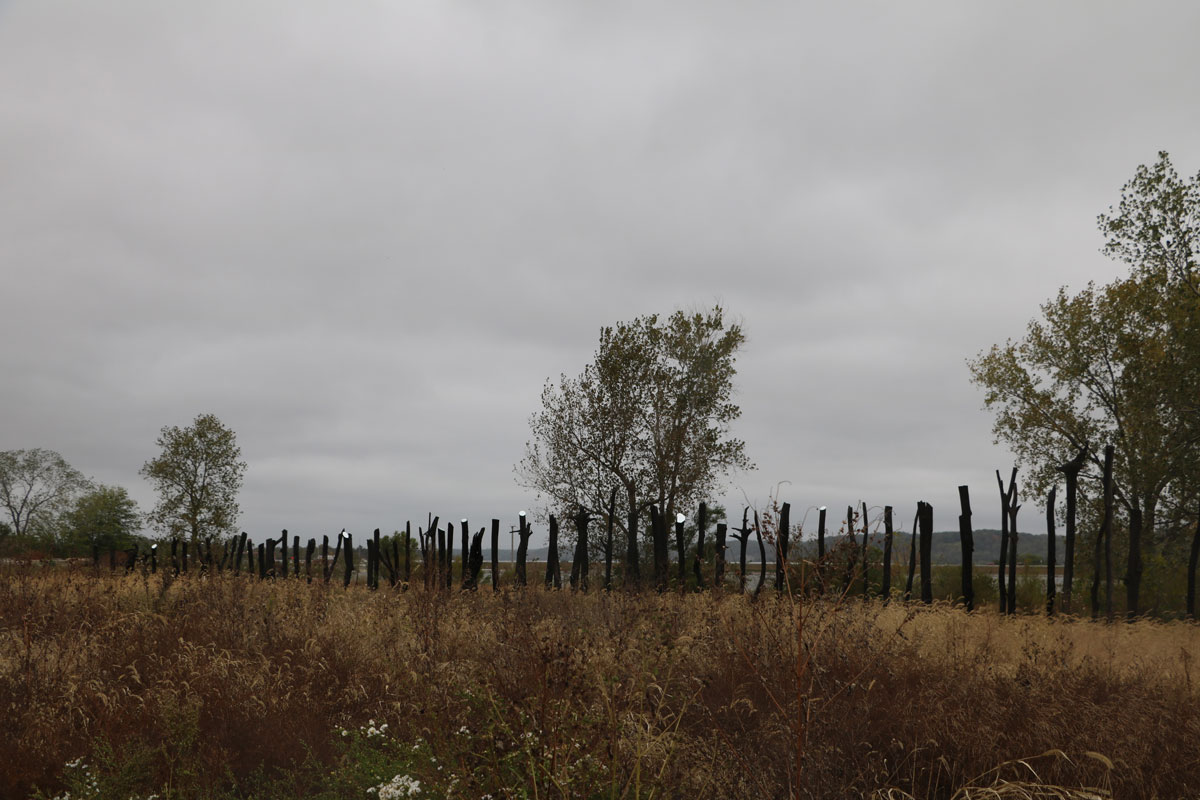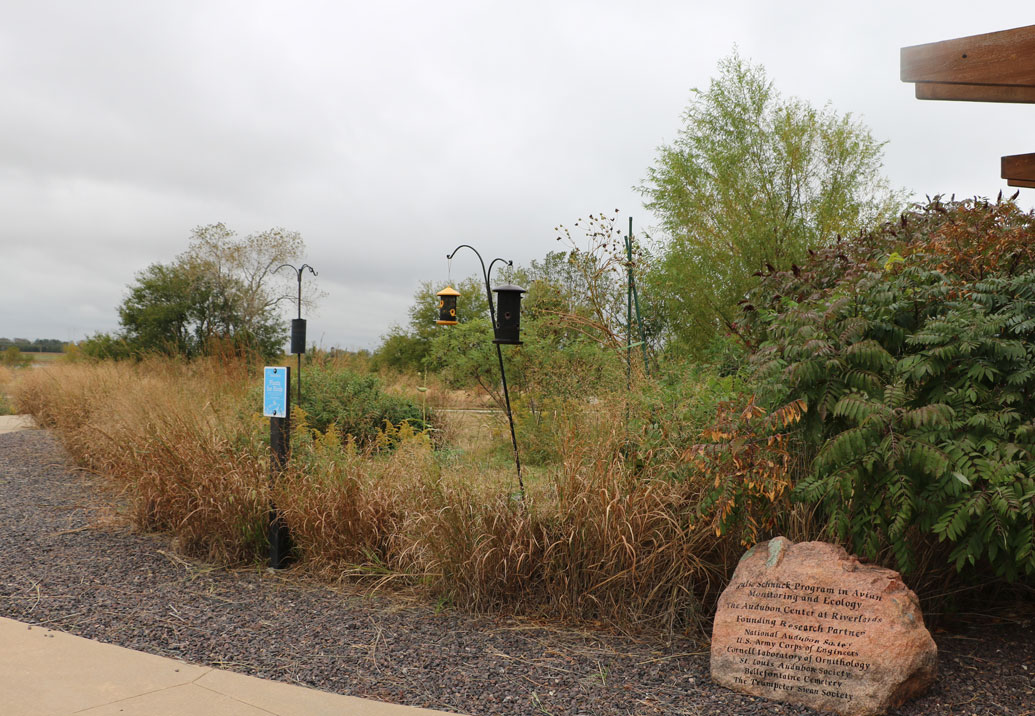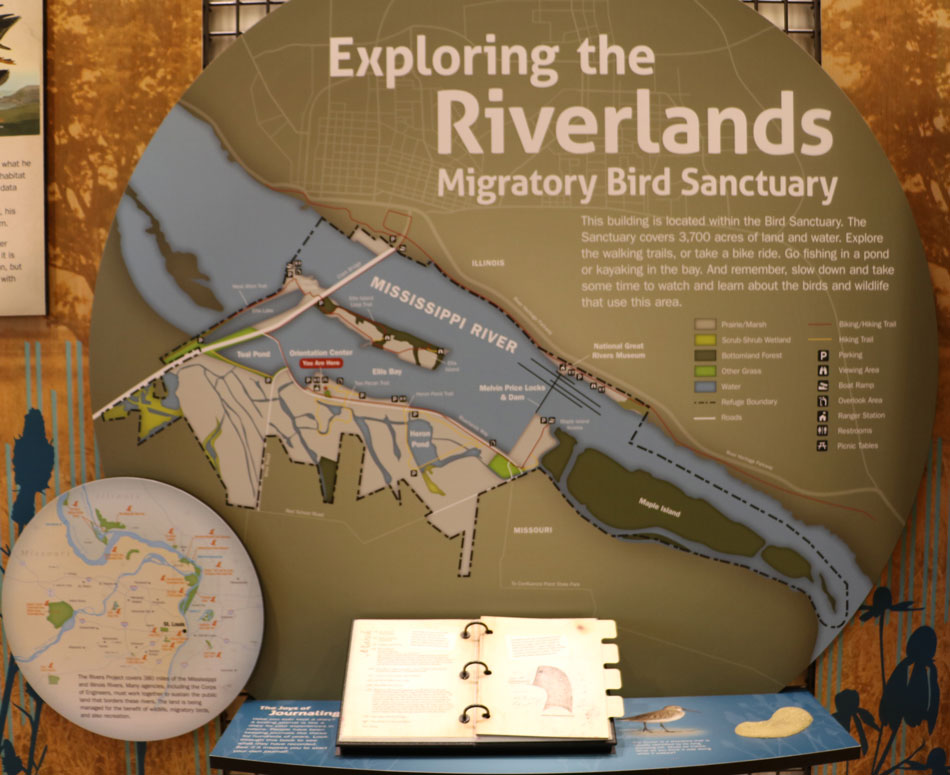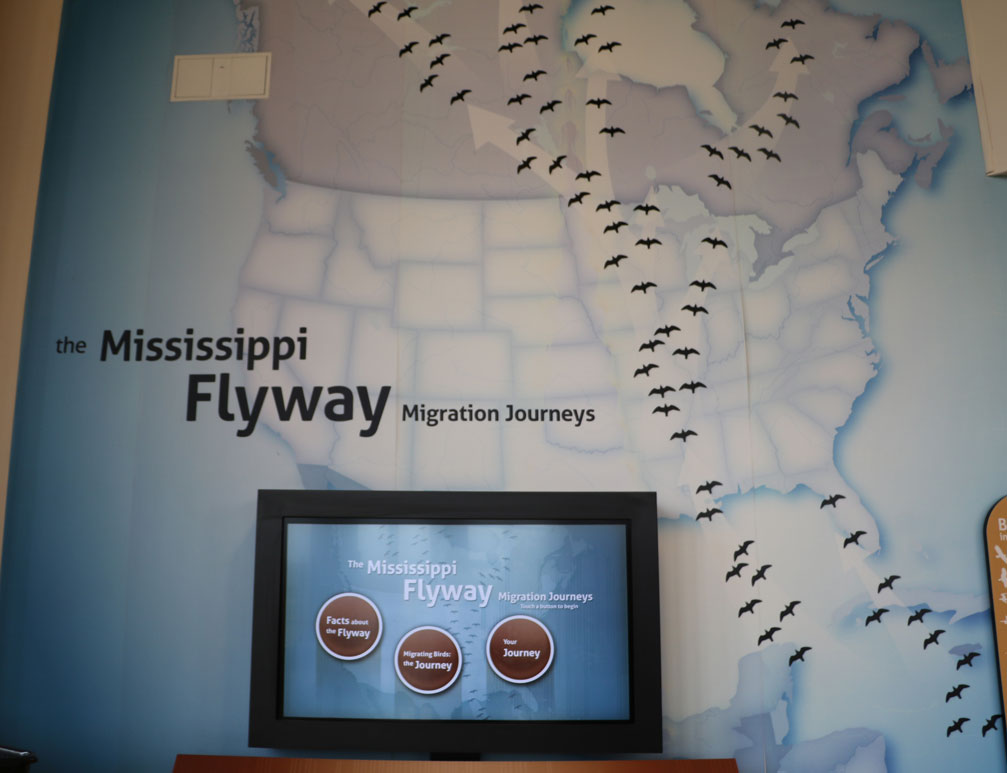post and photos by Donna Short, Chapter member and volunteer
Audubon Center at Riverlands
Saturday, October 14 (55 attendees)
Though it was a windy, overcast day, over 50 members attended our last outdoor gathering of 2023 at the Audubon Center at Riverlands. Over 326 bird species utilizing the Mississippi River flyway stop over at Riverlands, whose goals are to improve conditions for breeding, migrating and overwintering birds and creating self-sustaining production of both native grassland seed and plants to promote a healthy grassland habitat at Riverlands that can support bird populations long-term.
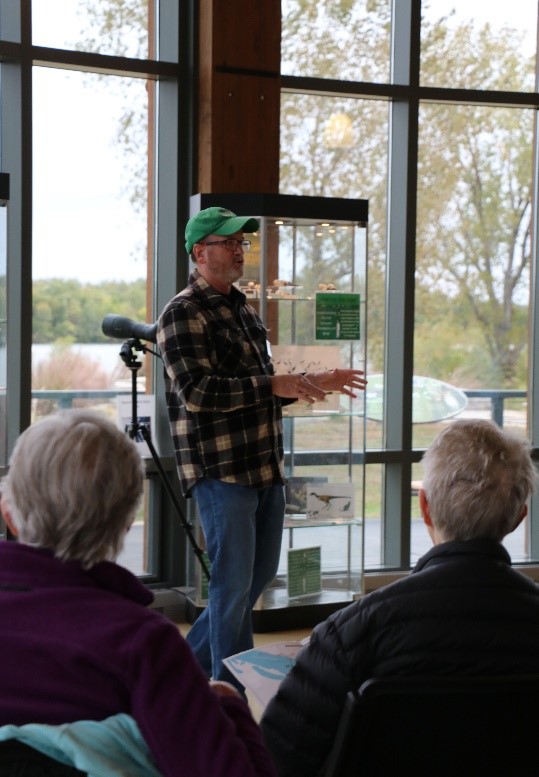
Ken Buchholz, Center Director, explained the Center’s three main program areas: Conservation, Public Engagement and Education.
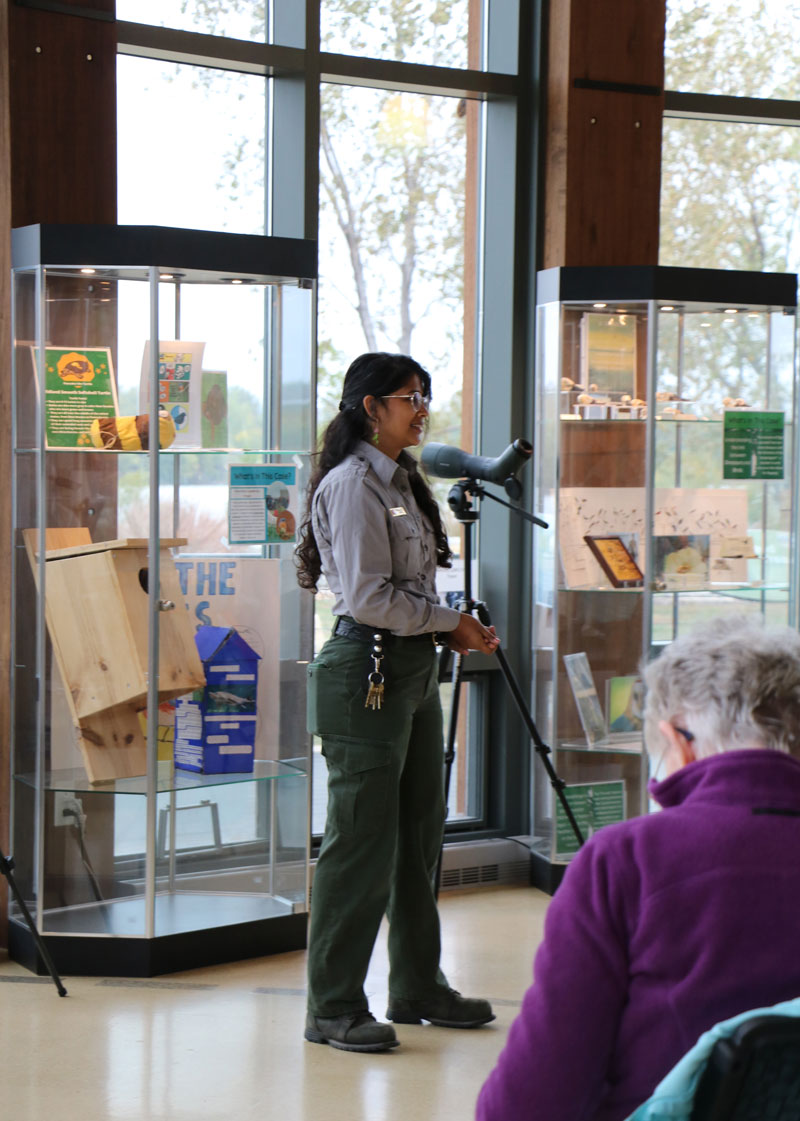 Insiyaa Ahmed, US Army Corps of Engineers, explained the role the ACE plays and the history of Riverlands. She is a member of the Environmental Stewardship team at the USACE Rivers Project Office. The team is composed of biologists and foresters that manage approximately 49,000 acres of land along the Mississippi and Lower Illinois Rivers. Insiyaa’s role is to assist with forest monitoring and management, developing plans, and coordinating partner outreach and collaboration.
Insiyaa Ahmed, US Army Corps of Engineers, explained the role the ACE plays and the history of Riverlands. She is a member of the Environmental Stewardship team at the USACE Rivers Project Office. The team is composed of biologists and foresters that manage approximately 49,000 acres of land along the Mississippi and Lower Illinois Rivers. Insiyaa’s role is to assist with forest monitoring and management, developing plans, and coordinating partner outreach and collaboration.
The USACE acquired the area we know as Riverlands in 1988. The Corps decided to turn this area from agriculture into a mosaic of prairie, wetland, and forest. Riverlands was reshaped and wetlands along with water control structures were added. Additionally, hundreds of acres of tallgrass prairie were planted.
The Corps at Riverlands has been working with the St. Louis Audubon since the 1990s. The Center was built in 2011. The Corps partners with the Audubon on bottomland forest and grassland bird monitoring, habitat restoration grants, environmental outreach, and education.
The Rivers Project began constructing a greenhouse this fall. The 30’x70’ greenhouse will support growing thousands of native plants for prairie and pollinator habitat restoration and enhancement. The greenhouse will also support the Great Rivers Pollinator Habitat Partnership (GRPHP), a regional partnership dedicated to creating and enhancing pollinator habitat, supporting education and outreach, research, and more.
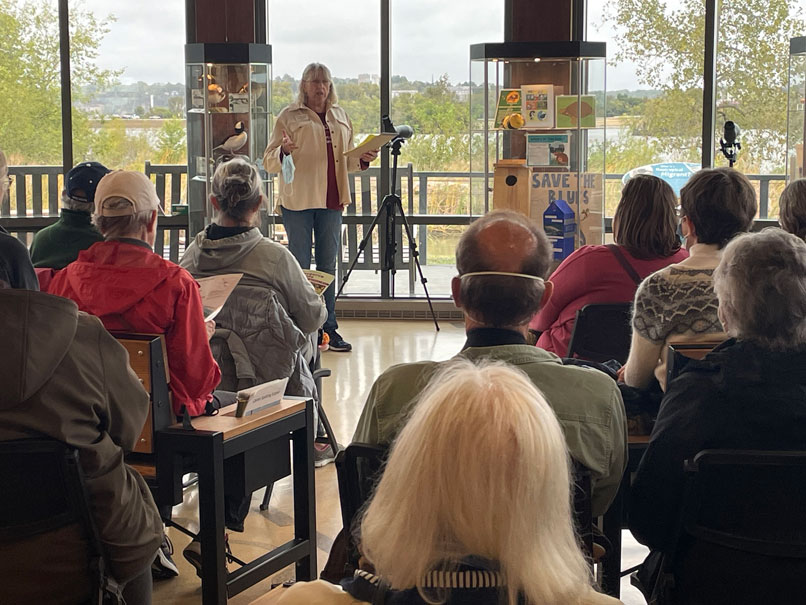 Anne Horton, Wild Ones St Louis Member and lead volunteer at Riverlands for the past ten years, described the various native plant bird, pollinator, and pond gardens which make Riverlands friendly to native birds and insects.
Anne Horton, Wild Ones St Louis Member and lead volunteer at Riverlands for the past ten years, described the various native plant bird, pollinator, and pond gardens which make Riverlands friendly to native birds and insects.
Anne pointed out the importance of volunteers to maintaining the gardens. Maintenance is a constant struggle due to the invasive grasses and foxtail. Anne thanked the Wild Ones members who have been part of the volunteer group. In the Spring of 2024 Anne will be looking for new volunteers and you can join her!
Depending on the season the native plant gardens are a dazzling array of flowers, grasses, and sedges, which attract colorful visitors such as Indigo Buntings, Ruby-throated Hummingbirds, American Goldfinches, Tree Swallows, Killdeers, or Dickcissels as well as butterflies, moths, skippers, dragonflies, damselflies and more!
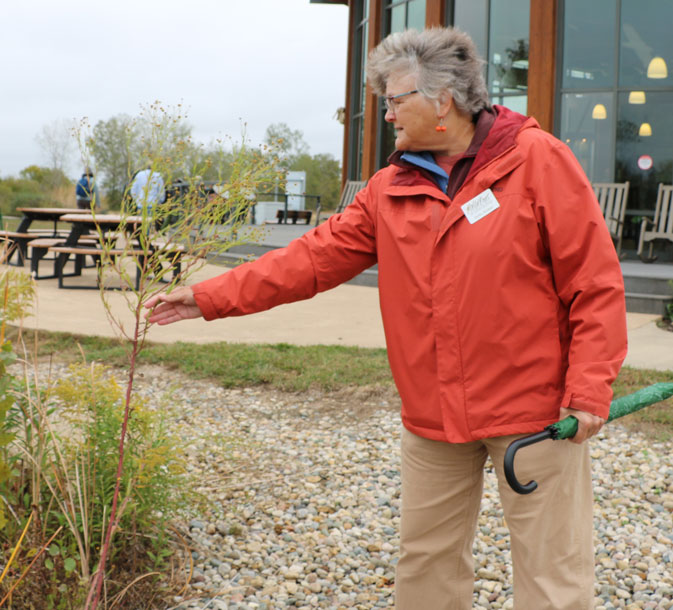
Kathy points out a Decurrent False Aster (Boltonia decurrens) which is an endangered plant found in the Pond area.
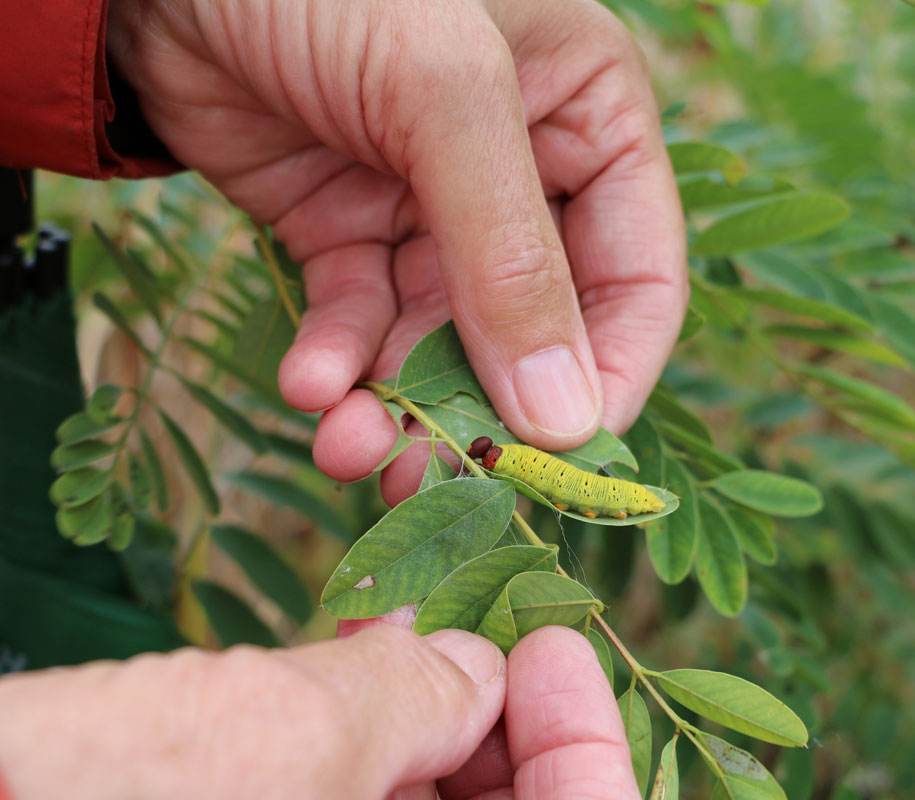
Kathy uncovers a Silver Spotted Skipper Caterpillar hiding in an Indigo Bush (Amorpha fruticosa) leaf.
The Amphitheater is available for educational programs. Riverlands provides materials and programs about native plants through collaborations with Forest ReLeaf, Grow Native, St Louis Audubon and Wild Ones. Students, scouts and campers learn about native plants and pollinators through their Nature Education for Stewards of Tomorrow (NEST) programs for kids grades K-12 and other programs!
River Ark, A Site Specific Sculpture by Thomas Sleet: The charred posts, used in this installation have received a blackened patina and a boiled linseed oil coating. The top ends of posts are fitted with mirrors to reflect the sun and sky at different angles at different times of day. For more information see Sculpture.
Bird and Pollinator gardens are located throughout Riverlands. A large diversity of bird species regularly use 1,200 acres of prairie marsh at Riverlands for food, shelter, nesting, and safe passage.
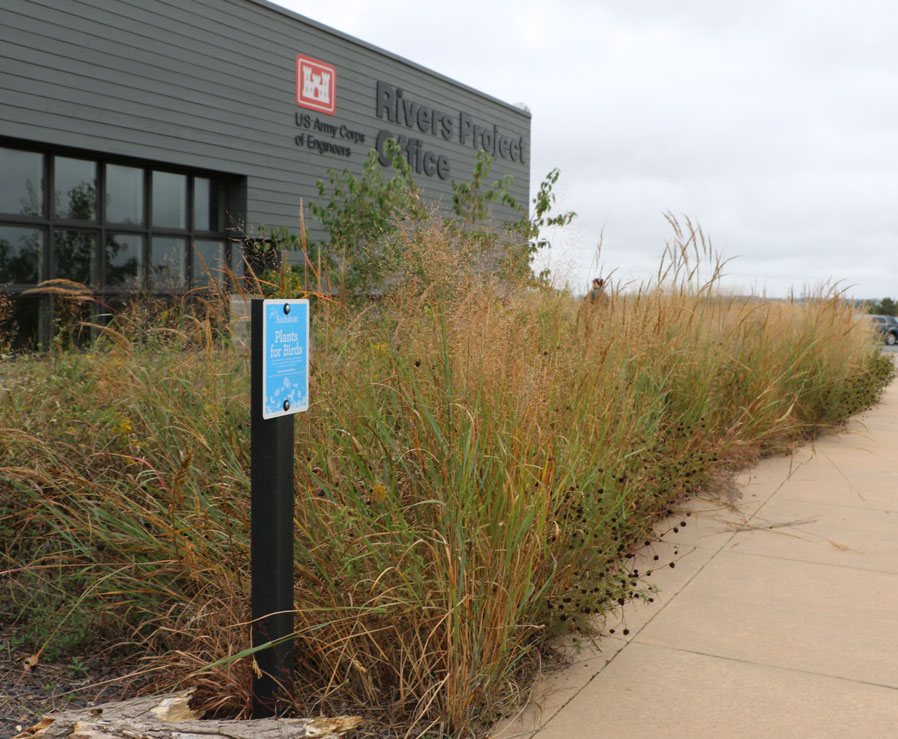
Switchgrass (Panicum virgatum), Indian Grass (Sorghastrum nutans), Little Bluestem (Schizachyrium scoparium) and forbs including Asters (Symphyotrichum), Blue Star (Amsonia), American Beautyberry (Callicarpa americana) and Blue Sage (Salvia azurea) planted along the main center building.
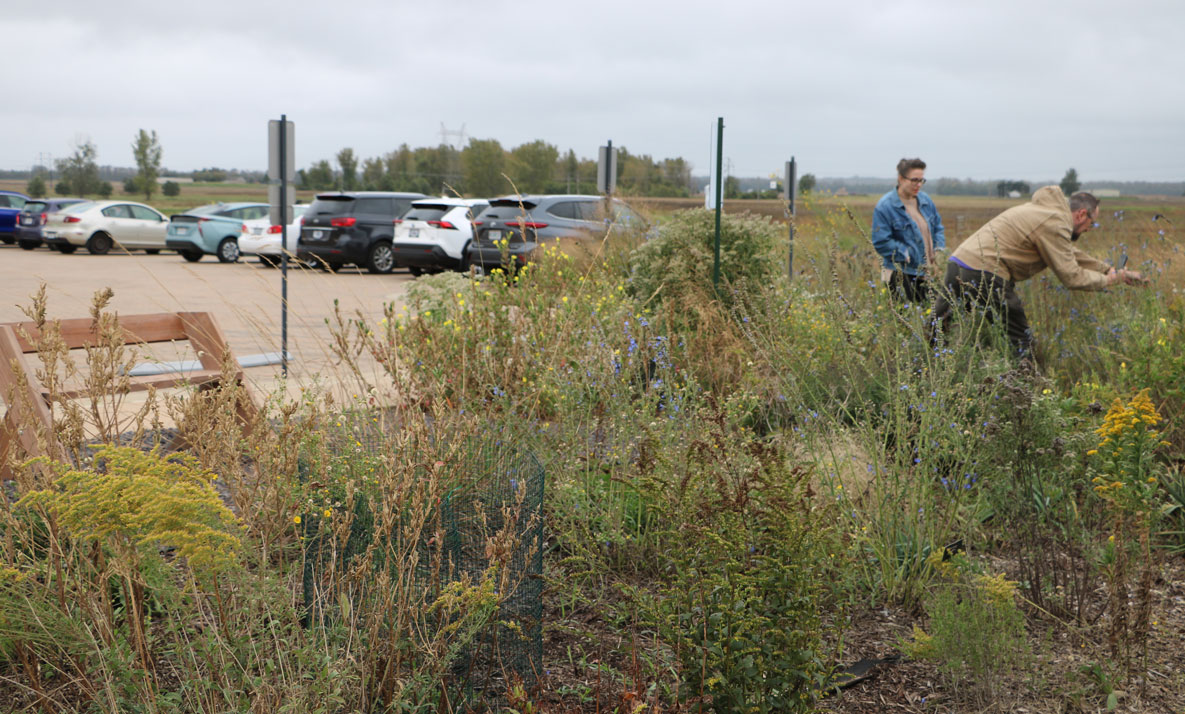
Blooming Goldenrod (Solidago) and Blue Sage (Salvia azurea) highlight the fall color here. Included are Asters (Symphyotrichum), Boneset (Eupatorium perfoliatum), Camphor Plant, Rose Verbena (Glandularia canadensis), Missouri Primrose (Oenothera macrocarpa), grasses and more.
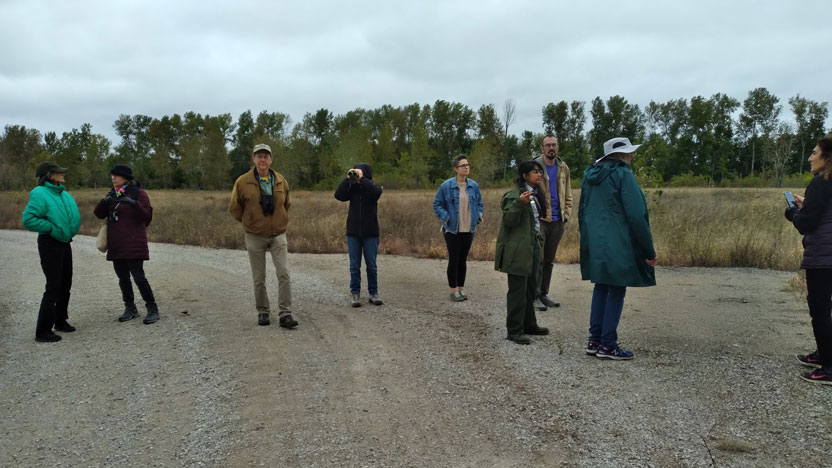
A group went to nearby Ellis Island for a nature hike. Insiyaa and James Faupel identified plants for the group and discussed the sand prairie habitat there.
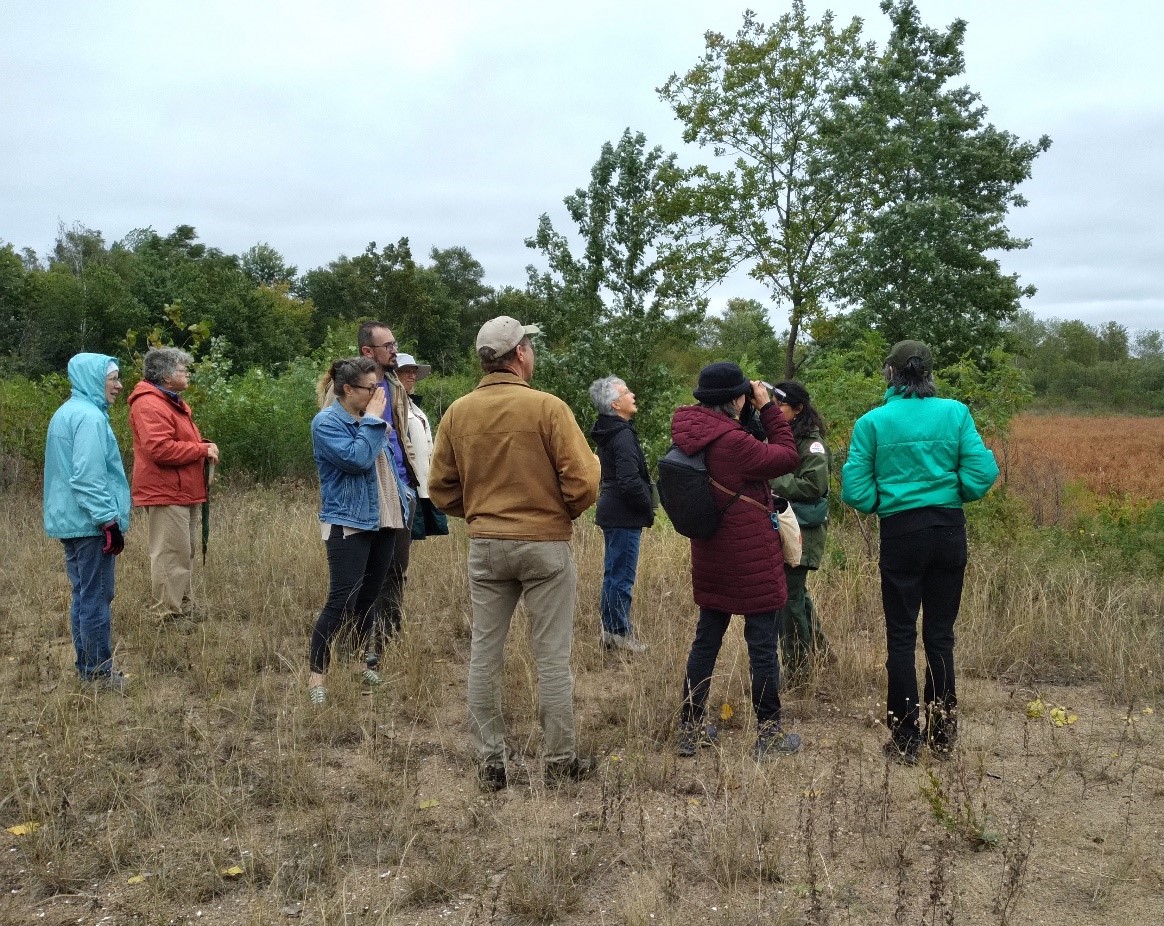
Insiyaa discusses the life cycle of the soft- shelled turtles that come out of the pond. One of the turtles is in the photo covered by one of the colorful water-loving smartweeds (Persicaria). They use the sandy area to lay their eggs. The Corps monitors them and observes hatchlings prior to the young heading to the pond.
See the Riverlands website for ways you can help through volunteering or donating.

